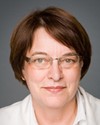Thank you.
In terms of professions, Ontario has funded bridge programs for training in more than 100 professions. We have a program in every regulated profession that has major immigrant landings, and by that, I mean immigrant landings of more 10.
We have nursing, medical lab technologists, pharmacists, agrologists—I never knew what agrologists were before I started this job—veterinarians, and optometrists. There's a big range of programs, and I'd be happy to share a list with this committee. Equally we have programs in the high-skilled, non-regulated occupations: human resources, IT, financial services, supply chain management, and those kinds of things. We have a very wide range of programs and professions that we've served.
How do we determine what professions we're going to serve, and is that decision linked to shortages in the labour market? In our applications process we're looking at employment outcomes but also at increased access to regulated professions.
In the regulated professions, one of our concerns is whether there is any program available to someone in that occupation that would help them prepare their dossier, which for the nurses, for example, takes 200-plus days to prepare. If the answer is no, even if the labour market demand is weak, we will fund or consider funding an initiative that at least increases someone's access to that regulatory process and his or her opportunity to compete.
When it comes to funding professions where there are no regulations—so it's a high-skilled occupation—the key criteria is evidence of employer demand. That's how we get strong employment outcomes. We insist that there be labour market research given to us.
I will say, though, that at the end of the day, we can all quote government studies and C.D. Howe Institute reports, but the best indication of employer demand is a strong set of letters from employers who say they will mentor five people, or they have six internships, or they need to hire this many people and they will agree to meet them for coffee to network and to shake their hands. That is the best indication of employer need and hunger for these programs.




